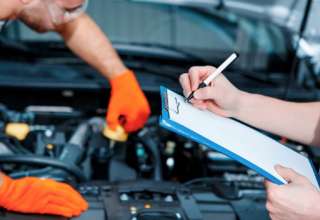Buying a new car is one of the most exciting and significant purchases you will make. That being said, you want to make sure you are making the right choice for yourself and your family.
Asking the right questions can help ensure you get a vehicle that meets your needs and budget. Before heading into the dealership, prepare a list of the top questions you want to ask.
What’s the vehicle like to park?
Parking your car can be a challenging task. It takes patience and practice to learn the right techniques. Whether you’re parking on a sidewalk or street, you must always give enough room to other vehicles and pedestrians. This is especially true when parking on a busy road. In addition, you should always use your turn signal when you’re reversing or stopping in a lane of traffic so that other drivers can know you’re about to park or stop. This will help keep others safe and prevent accidents. It’s also good practice to stay alert and watch your surroundings for any signs or other warnings that may indicate you need to make a quick stop.
What’s the vehicle like to drive on the highway?
The highway is a great place to test out a new car. Not only is it safer than a city road, but it’s also easier on your wallet and gas tank. However, you should be aware that driving on the highway can be downright scary. If your vehicle starts to stall or perform other unnerving behaviors, you first should pull over on the shoulder of the road as soon as possible.

What’s the vehicle like to drive in the city?
If you live or work in the city, choosing a vehicle built for urban driving is important. Unlike highway driving, city driving is very demanding on a car’s engine and brakes. In addition, city roads often have a lot of traffic and are crowded. The resulting stress can lead to a jarring ride and wear and tear on a vehicle’s suspension, steering system, and other parts. Fortunately, many vehicles available have been designed for urban driving. These include Mitsubishi Mirage, a compact car that is ideal for the city. So, when you are looking for a new vehicle, make sure to ask these questions and pick the perfect one for you!
What’s the vehicle like to drive in the snow?
Driving in snow can be dangerous for drivers of any experience level. They have less control as they speed up, slow down, and come to a stop, their visibility is decreased, and they are constantly dealing with black ice.
Fortunately, modern vehicles have many features that make winter driving much more comfortable and safer. Some of these features include head-up displays, heated mirrors, and heated seats.
Other features that help the vehicle handle snowy roads include anti-lock brakes, stability control, and automatic high beams. These systems work together to first detect when your car is sliding sideways and apply braking to whichever wheel or wheels will help bring it under control.
One small, amber, flashing light in the instrument cluster is enough to let you know your tires are losing traction. You should ease up on the gas pedal and use the brakes to regain traction.
It’s also wise to look for a vehicle with good ground clearance to help your tires clear a path under the snow without getting stuck in it. SUVs, in particular, tend to have higher ground clearance than cars and are better able to handle snowy conditions.

What’s the vehicle like to drive in the rain?
When it comes to driving, rain can be a challenging and sometimes even dangerous weather condition. It makes visibility difficult, and it decreases tire traction. It can also make it hard to stop your vehicle in case of an accident.
Fortunately, there are a few things you can do to help minimize your risk of an accident when driving in the rain. These include reducing your speed, turning on your headlights, and maintaining an adequate distance between you and the car ahead of you.
Drivers may also want to consider deactivating their cruise control. This is especially important if you plan to drive in the rain, as it can cause hydroplaning.
Another safety measure you should take is to ensure your tires are in good shape. Your vehicle’s tires will have less traction on the road in the rain, so it is a good idea to get them checked and replaced as needed.
You should also avoid driving too fast in the rain, as it can be hard to see. This can lead to accidents that can be devastating. Finally, you should always give yourself enough time to reach your destination, no matter the weather conditions. This will ensure that you don’t get stuck in traffic and that you don’t end up late for work or school.












